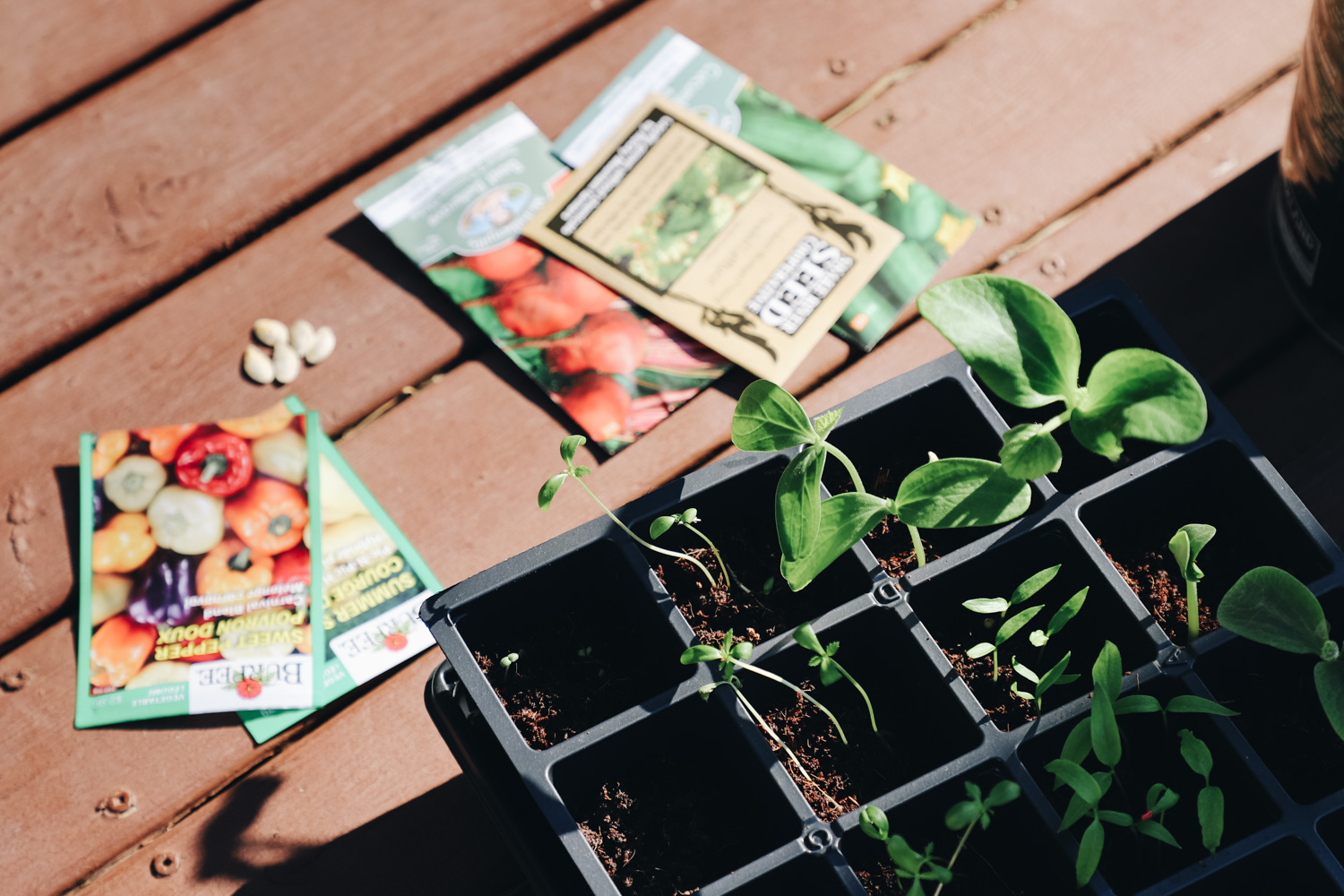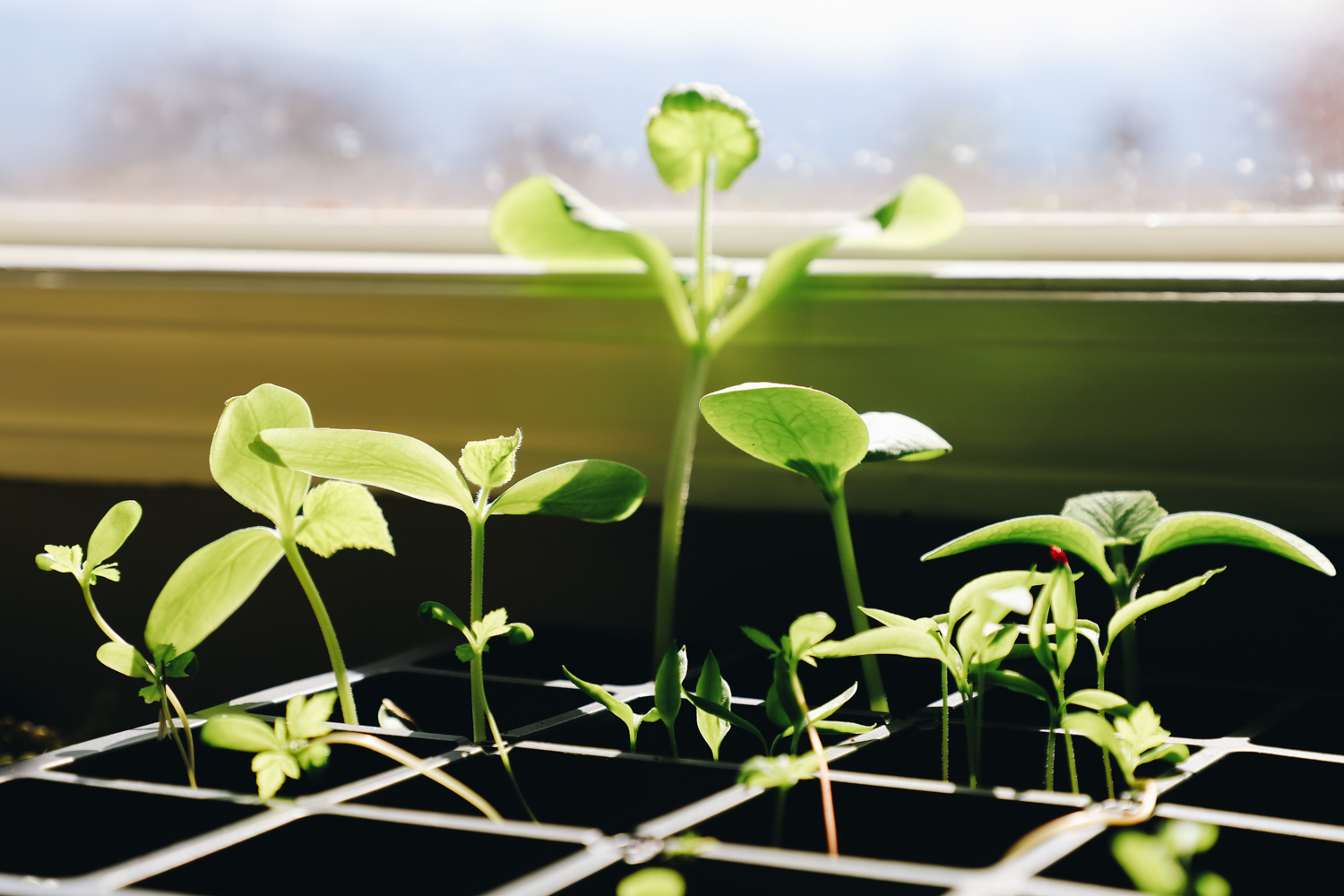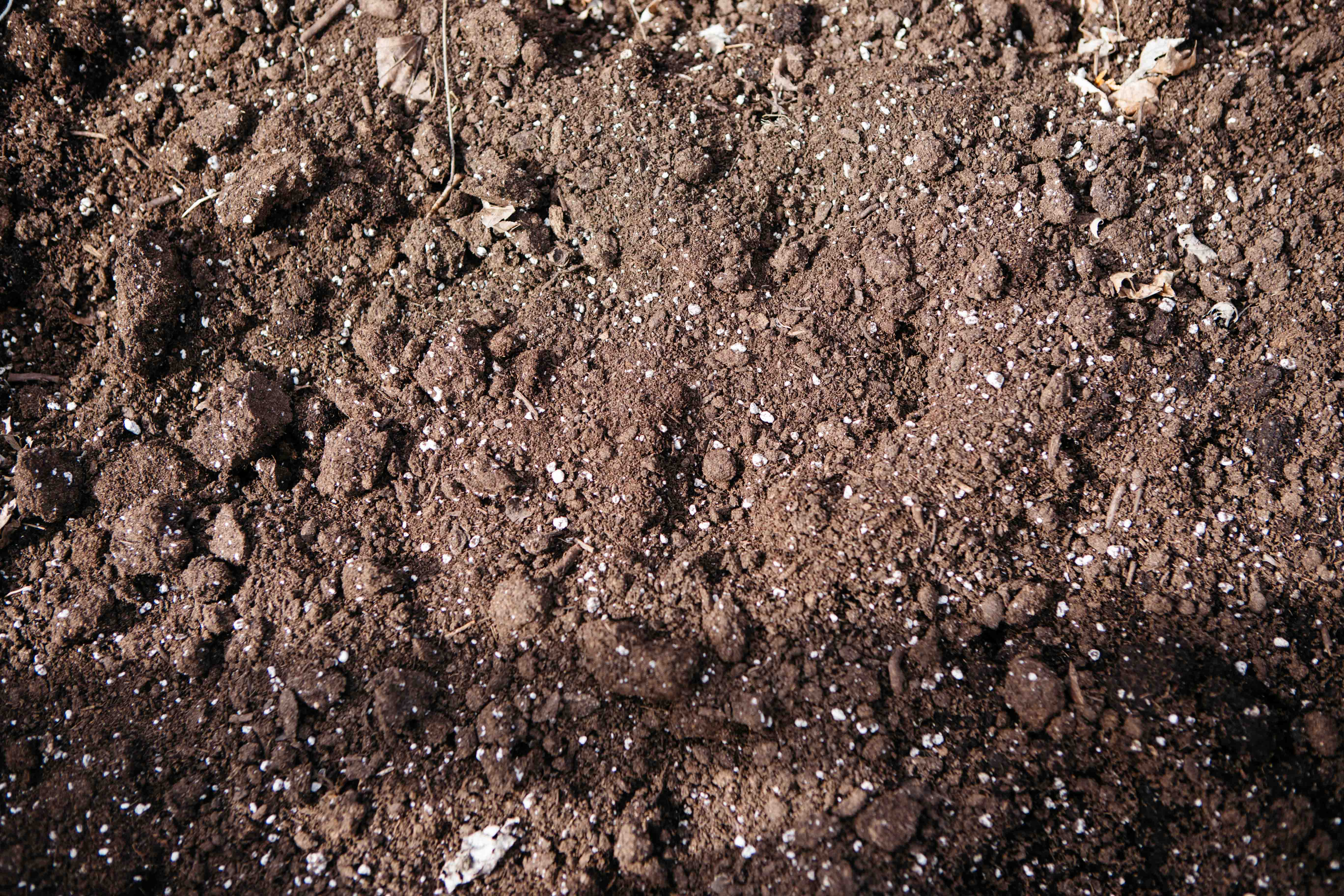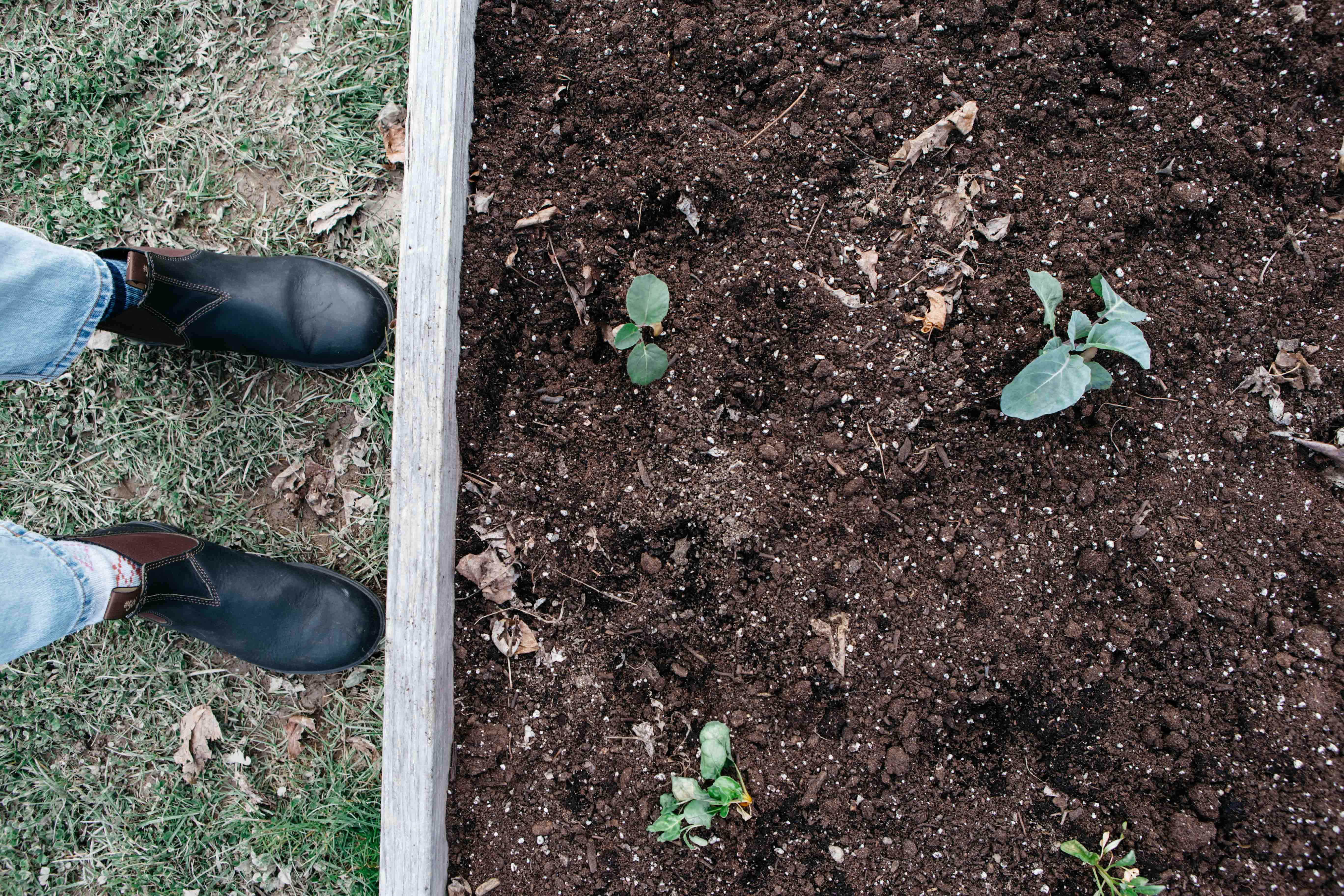Want to Grow a Garden?

Beginner Gardening Tips
6 Things to Keep in Mind as You Get Started
By Hailey Hirst with advice from Brittany Leavitt, Briana Feola, and Simone Martin-Newberry
This spring is a season of caring for ourselves. No matter how our lives have been touched by the health crisis, many of us are seeking comfort. We’re going for walks. We’re baking bread and cleaning out closets. Some of us are trying to raise chickens… and a lot of us are planting seeds to start a garden.
It feels natural to want to know how to feed ourselves in a time of deep uncertainty. But more than that, maybe we also want validation that the actions we’re taking now—from the constraints of our homes, yards, and neighborhoods—are making a difference.
A seedling offers proof: this time is worth something. We can plant a seed and watch it grow. And weeks from now, we can put those salad greens on our table or make pesto from our home-grown basil.
Gardening is calming, too. Even if we’re growing succulents or snake plants rather than food, the connection to something green and natural does us good. It’s a nature fix from home.
Whether it’s a flower pot in a windowsill, a planter box on a patio, or a small plot you’ve cleared by the fence where the raspberry vines used to grow, here are some tips for how to start your own garden this year, including advice from three of our favorite gardeners.
Meet the Gardeners:
Simone Martin-Newberry: A deeply poetic writer and talented graphic artist, Simone is a longtime advocate for the benefits of house plants. We chatted on the She Explores podcast about how she “finds nature in the in-between”—whether it’s in city parks, in her apartment, or in her travels. The archives of her blog, Darker Than Green, are well worth dipping into. You can find her on Instagram @unclesweaters.
Briana Feola: Art and nature go hand-in-hand for Briana. Much of the work she creates with her Brainstorm business partner/husband is inspired by nature and the science behind it. As she shared on our podcast, by creating art for a living, she gets to wear a lot of hats: nature explorer, biologist, geologist—and gardener. You can find her on Instagram @wearebrainstorm.
Brittany Leavitt: Britanny’s a teacher whose passion is to educate about the outdoors, all while making them more welcoming and accessible for the BIPOC (Black, Indigenous, People of Color) community. She works with Brown Girls Climb, Outdoor Afro, Color the Crag, and REI (to name just a few organizations!). In her spare time, Brittany cultivates a beautiful backyard garden. You can find her on Instagram @bleavitt8.
- Briana Feola
- Brittany Leavitt
- Simone Martin-Newberry
Six things to keep in mind as you start your garden:
You can garden anywhere.
You don’t need a yard to grow a garden. Any space that gets sufficient sunlight will do. Sunny windowsills, balconies, patios, and porches are great places to start a container garden or cultivate flowers and cactuses.
Brittany Leavitt says, “You can start a garden in any size container, from a box garden to k-cups.”
Start small.
It’s hard not to get overly ambitious when buying packets of seeds, but starting small will set us up for more success.
Simone Martin-Newberry gives great advice on this: “It may be easy to get swept up by other peoples’ gardens and plant collections on social media. Look away. Focus on a few plants whose care instructions are fairly simple and learn them. The best gardeners are great observers… Know your plants inside and out, and when caring for them feels comfortable and familiar, then think about expanding your comfort zone a little more and adding to your garden.”
So what’s good to start with? Herbs and greens are a safe bet. Briana Feola says, “Basil is hardy and super easy to grow. Any herbs, spinach, Swiss chard, and lettuce are also fairly easy to grow in pots.” Tomatoes are also simple and gratifying. There’s nothing like a sweet cherry tomato fresh off the vine.

Seedlings indoors by a sunny window.
Seek the sun.
Brittany’s first suggestion is this: “Observe your light source. Is your space bright or is it more of a low light?” In the same vein, Briana advises to “find the sunniest spot in your yard, on your balcony, or in a windowsill.”
Most plants do best with at least six hours of direct sunlight per day, although others can grow well in partial or full shade (lettuce is especially forgiving). Mapping out how much sun you have access to will give you an idea of what might grow well. It’s also good to know what growing zone you live in to determine when to plant outdoors.
Indoors, though, you’re less limited by seasonal shifts. Briana says, “As long as there’s enough sunlight, you can have cut-and-come-again lettuces all year round.”
Only have access to low light? Brittany recommends low-light and low-maintenance house plants like Nerve plants, Snake Plants, and Queen ferns.

Prayer Plants are pretty easy going, too!
It’s all about the soil.
It makes sense, right? The foundation of a garden and all the nutrients that plants need come from the soil, so don’t plant your seeds or seedlings in any old dirt.
Briana’s advice is to “buy or dig for the best quality soil (not too sandy, not too clay, something right in between).” Ideal vegetable garden soil includes lots of organic material, like composted leaves to nourish plant growth.

Briana’s Soil
It’s worth it. Simone says, “The thing I spend the most money on during the growing season is good quality potting soil. If you have the space and ability to compost, of course that’s ideal (and free!) but for urban/small space gardeners, a large bag of soil will help get you gardening right away.”
And as for tools to move that dirt around? You don’t need anything special. Kitchen utensils will work for container gardens. For larger scale, Simone says, “I’ve been using the same old hand spade for over a decade. It’s pretty much my only garden tool. In a pinch, you can even use a small bowl or plastic garden pot.”

Grow what you love.
When choosing what to grow, the simplest answer is: what do you love to eat? And what non-edible plants bring you joy? For me, it is sugar pie pumpkins and the frilly orange bursts of blooming marigolds.
As far as sourcing your own seeds, the hardware store is an easy option, but you can also look at kitchen scraps. My pumpkin seeds came from a store-bought pumpkin last fall. Simone adds, “A healthy sprig of basil popped into a glass of water will grow new roots. A hearty hand of ginger buried just under the soil will spread and sprout beautiful ginger-scented leaves… Be resourceful. You don’t have to spend a lot of money to get your hands in the dirt.”
If you do want to invest more to find local or native seed varieties, check out nurseries or garden centers in your local area. If you’re in the American west, Native Seeds/SEARCH is an incredible resource with an online seed store.
Simone also suggests asking friends or family members if they’re willing to share seeds or cuttings. “Tending to a garden made up of gifts from loved ones is a beautiful, life-affirming activity.”
Be patient.
After you’ve mapped out your sunny garden space, prepared your quality soil, found seeds or seedlings, and planted them tenderly, patience is key.
Simone says it so well: “The most important thing to do when getting started with a garden is to be patient—with the plants, but also with yourself. You will make mistakes, you might even kill a few plants, but it’s all part of the learning process. Becoming a gardener is a lifestyle change, and like any lifestyle change, you won’t become an expert overnight. Folks who have been taking care of plants for 40-50 years are still learning and messing up and scrapping ideas and starting over.”
We love this reminder to go easy on ourselves and celebrate what grows from this time at home.

It takes time!
If you’re looking for someone to talk to, our Facebook groups are a great place to make a connection with outdoor lovers and travelers alike: She Explores Facebook Group & Women on the Road Facebook Group.



Be the first to comment